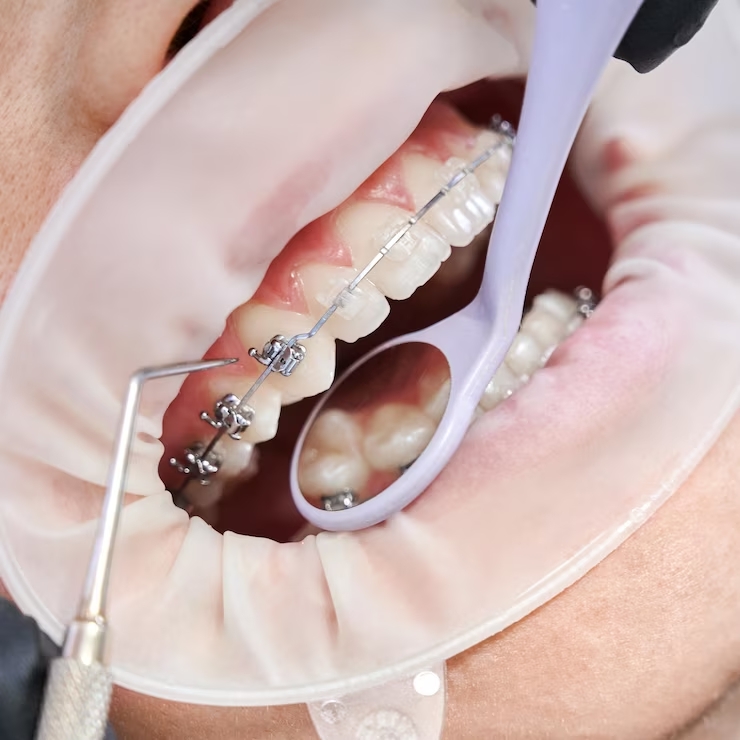Orthodontic Treatment

Procedures

Initial Consultation
Meet our orthodontic team to discuss your concerns and explore treatment options tailored to you.

Examination and Diagnosis
We conduct a thorough assessment to understand your orthodontic needs and develop a personalized plan.

Customized Treatment Plan Development
Meet our orthodontic team to discuss your concerns and explore treatment options tailored to you.

Orthodontic Appliance Placement
Gentle placement of braces, aligners, or other appliances to begin your orthodontic journey.

Periodical Adjustment Visits
Scheduled visits to fine-tune your treatment progress and ensure optimal teeth movement.

Retention Phase and Maintenance Plan
Transitioning to retainers and implementing a maintenance plan to preserve your beautiful, aligned smile.
FAQs
Yes, orthodontic treatments can be effective for adults. While it’s commonly believed that orthodontic treatment is most successful during adolescence when the jaw is still growing, adults can still benefit from orthodontic intervention. Advances in orthodontic technology, such as clear aligners like Invisalign, have made treatment more discreet and comfortable for adults. Additionally, adult orthodontic treatment can address a variety of issues including misaligned teeth, bite problems, and jaw discrepancies, improving both oral health and aesthetics.
Orthodontic treatment can begin at any age, but it is typically recommended to start during adolescence when the jaw is still growing. However, adults can also benefit from orthodontic treatment.
The duration of treatment varies depending on the severity of the orthodontic issues and the chosen treatment method.
Here’s a general timeline for some common orthodontic treatments:
Traditional Braces: Treatment typically lasts between 18 months to 3 years, although some cases may require shorter or longer durations.
Clear Aligners (Invisalign): Treatment duration varies depending on the complexity of the case, but it generally ranges from 6 months to 2 years.
Lingual Braces: Treatment duration is similar to traditional braces, typically lasting between 18 months to 3 years.
Self-Ligating Braces: Treatment with self-ligating braces may be slightly faster than traditional braces, with durations ranging from 12 to 24 months on average.
Ceramic Braces: Similar to traditional braces, treatment duration with ceramic braces typically ranges from 18 months to 3 years.
Palatal Expanders: Treatment with palatal expanders usually lasts for several months to a year, depending on the amount of expansion required.
Orthodontic Headgear: Treatment duration with orthodontic headgear varies depending on the specific issues being addressed, but it may last for several months to a year or longer.
While some discomfort may be experienced during certain stages of treatment, orthodontic procedures are generally not painful. Over-the-counter pain relievers can help alleviate any discomfort.
Patients typically need to visit the orthodontist every 4 to 6 weeks for adjustments and monitoring of progress.
Yes, braces are designed to withstand normal activities, including sports and playing musical instruments. However, a protective mouthguard may be recommended for certain sports activities.
Patients should maintain good oral hygiene by brushing and flossing regularly, avoiding hard and sticky foods, and attending regular dental check-ups.
Yes, wearing a retainer is typically necessary after orthodontic treatment to prevent teeth from shifting back to their original position. Retainers may need to be worn full-time initially and then gradually reduced to nighttime wear.
No, orthodontic treatment not only enhances the appearance of the smile but also improves oral health, function, and overall well-being.

